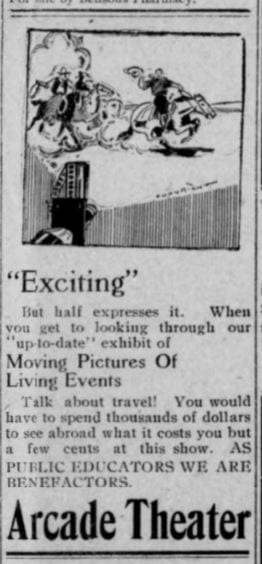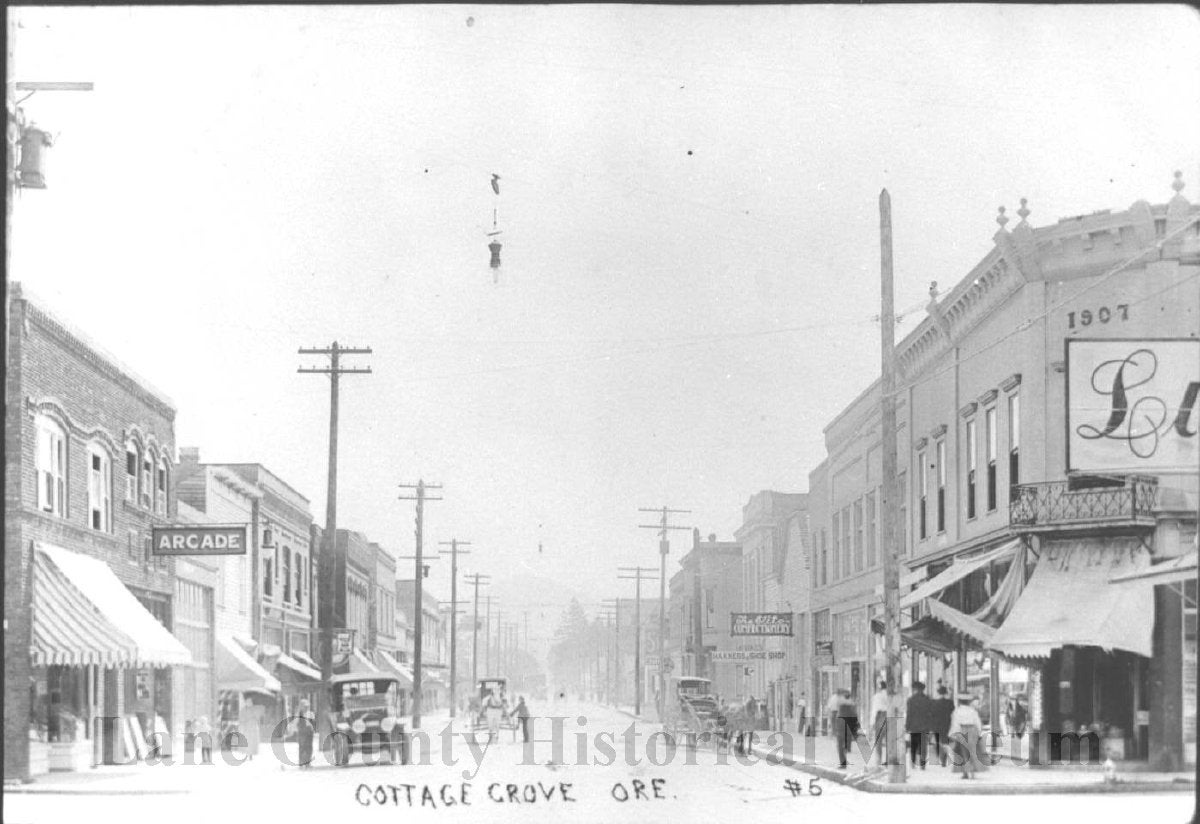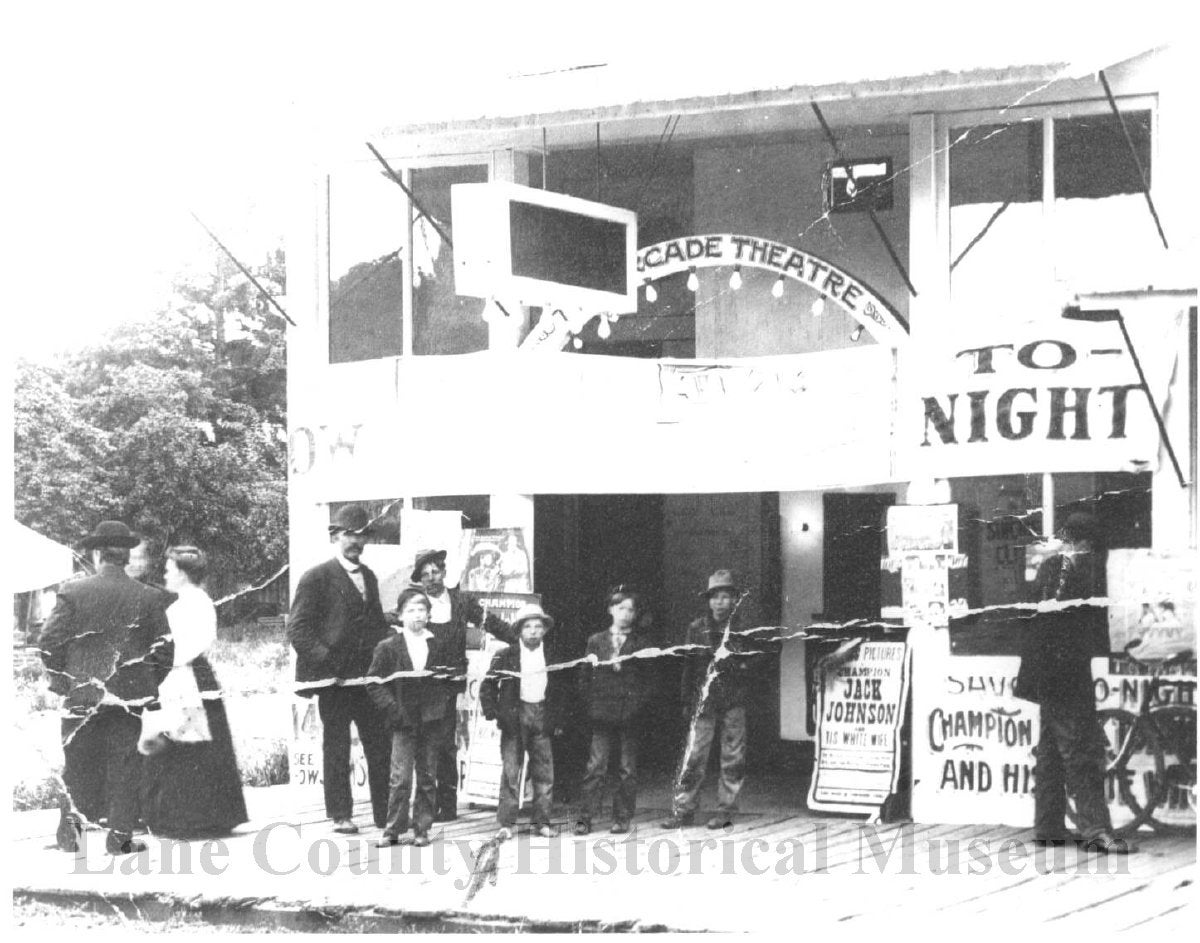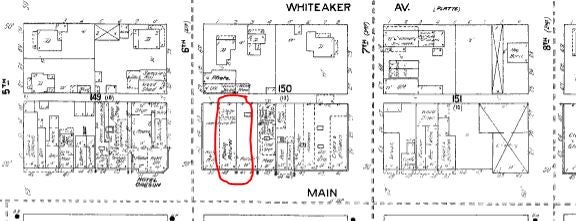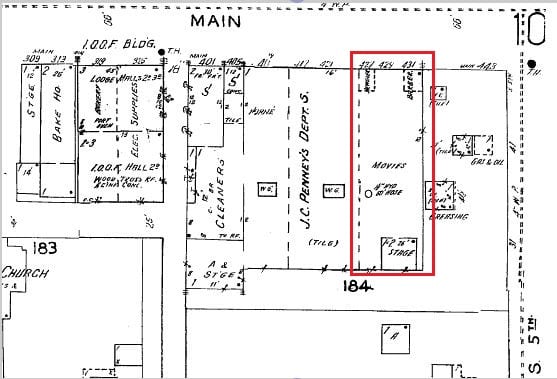The Arcade “electric theatre” opened in April of 1909 in the Martin building, however the precise location of the original Arcade theater is a little hard to pin down.
The 1912 Lane County directory for Cottage Grove lists the Arcade Theatre at 504 Main St. That contemporary address is the corner of 5th and E. Main St. (currently home to Abraxas Video). However, the 1912 Sanborn Fire Insurance map (below) indicates a movie theater was located on the block between 6th and 7th. The theater later moved to 429 Main St. next to the J.C. Penney’s department store (below). The entire block burned down in a fire in 1963.
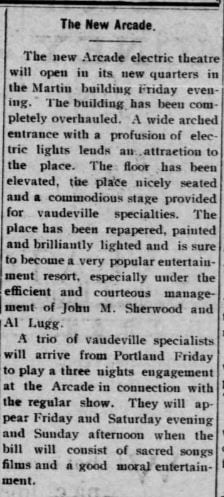
Regardless, the Arcade was a downtown fixture in Cottage Grove for decades through the 1960s. The theater opened as a movie house and films were always a central part of the programming, although like most small-town theaters the Arcade also featured a variety of vaudeville, music, boxing films, live theater, and lecturers. The Arcade also served as a community event space for clubs and organizations to meet.
Over its first few decades as a theater, it had a high turnover in owners and managers until the 1920s when the Morelock family bought the theater. They sold it in 1931 and then resume ownership sometime soon after, as news items report William Morelock as owner/manager in the mid-1930s.
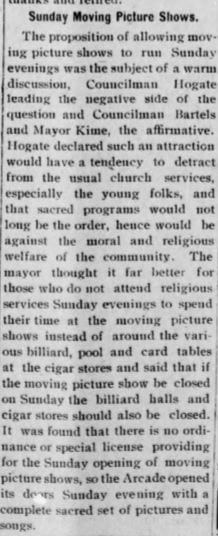
The Arcade’s promotional strategies remained largely consistent throughout its years of operation. Managers ran regular ads in the local newspapers to announce programming. In the early days, there were “beautiful baby” contests, merchandise giveaways, and benefit shows for local community groups. The Arcade made a point of highlighting the moral and educational value of its shows. On Sundays in 1910, for example, audiences could attend a “complete sacred set of pictures and songs.”

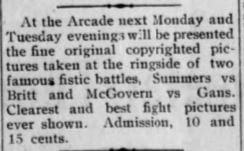
Since Cottage Grove is a small town the advertisement and events held in the theater were focused on families and children in order to promote an environment that the whole family could enjoy. Ranging from best baby contests to hygiene films for males and females, all the events could appeal to a wide audience. The advertisements could be a grand affair and take up half a page in the local newspaper. One of Morelock's marketing strategies was having other local businesses sell theater tickets at a discounted price.
In order to keep up with the ever-changing times, there were many additions to the theater over the years. In 1912 the theater added a grand piano to the theater and attendance rose instantly. Cleo Morelock had a Western Electric sound system installed in 1928. This was still relatively early in the trend of converting to sound and was a great business move due to the popularity of sound. There were also many renovations done over the years the most significant being an addition of a coffee shop to the facade of the building and redoing it entirely in 1948.
